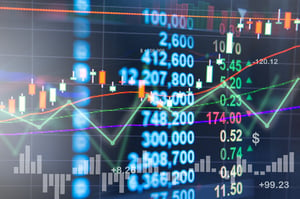 When the media refers to “the Market” just what does that mean and why does it matter? For most of us with memories of stock market turmoil as well as exuberance, we thought you might be interested in getting some answers to these questions minus the analysis that often does more to confuse than to clarify.
When the media refers to “the Market” just what does that mean and why does it matter? For most of us with memories of stock market turmoil as well as exuberance, we thought you might be interested in getting some answers to these questions minus the analysis that often does more to confuse than to clarify.
When people refer to “the Market”, they typically mean the U.S. stock market. Often the measure they are using is either the Dow Jones Industrial Average (DJIA or “the Dow”) – which is an index of the stock prices of 30 major U.S.-based companies - or the Standard & Poor’s 500 Index, or the S&P 500®. The S&P 500® measures the performance of about 500 stocks of the largest companies in the U.S.
Understanding the DOW
You may have noticed that the Dow is comprised of only 30 companies. The stocks in the Dow usually represent very recognizable companies that have been around for a long time like Proctor and Gamble, which is known for making consumer products such as soap and diapers, or Johnson & Johnson, a pharmaceutical and consumer goods company known for items such as Tylenol or Band-Aids. But there are also newer companies such as Apple, Facebook and Alphabet (the parent company of Google).
A criticism of the Dow is that the U.S., as part of a world market, is much less focused on manufacturing than it was in the past. The Dow was established in 1896 when the U.S. economy was primarily manufacturing based. The Bureau of Economic Analysis in 2018 reported that only 11.6% of the U.S. economic output was based on manufacturing so is this index still relevant? Most would say that the DJIA is less and less effective in providing us with information that reflects the broader stock market.
Understanding the S&P 500®
The S&P 500® represents a much more broadly based collection of stocks than the Dow and tends to be more commonly used to reflect “the Market”. A primary advantage of the S&P 500® as a benchmark for “the Market” is the wide breadth of the companies that it includes. A disadvantage is that, as a proxy for “the Market”, this and almost any other collection of stocks (an index) can be misleading. Large price gains may be concentrated in relatively few companies that are weighted more heavily in the index. This could lead to it taking only a few high-flying stocks to lift the value of the S&P 500® and not be an accurate portrayal of how the majority of U.S. stocks are performing.
Additional Indexes
Additional indexes, such as NASDAQ Composite Index (NASDAQ), are often cited in the media. The NASDAQ tracks the performance of stocks traded on the NASDAQ network of stock exchanges. This is often used as a benchmark to measure the performance of technology company stocks.
The U.S. stock market in 2018 comprised 43% of the world stock market and not too long ago it was 50%1. With the significance of the U.S. stock market declining, it makes sense to also pay attention to stock markets outside the U.S. Morgan Stanley Capital International (MSCI) has a couple of market indexes that track non-U.S. markets. The most commonly cited is the MSCI EAFE (Europe, Australasia, Far East) Index which measures major stock markets outside the U.S.
There are many lesser-known indexes as well but understanding these four will give you a basic sense for what “the Market” means.
Why does any of this matter?
The stock market is said to be a “leading indicator”, meaning that it can reflect the expected direction of an economy. Whereas the price of any particular stock may reflect more on the future expectations for that specific company, it may not be a good barometer for the broad market or economy. Looking at the collective performance of “the Market” may provide more appropriate feedback on what stock investors are expecting.
Sources:
Source 1: Ron Surz, NASDAQ, U.S. Stock Market is Biggest & Most Expensive in World, But U.S. Economy is Mot the Most Productive, https://m.nasdaq.com/article/us-stock-market-is-biggest--most-expensive-in-world-but-us-economy-is-not-the-most-productive-cm942558 (April 2, 2019)




